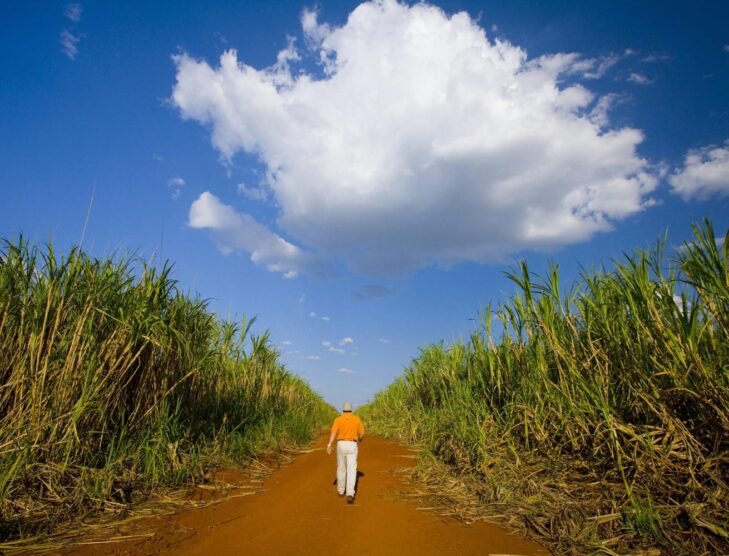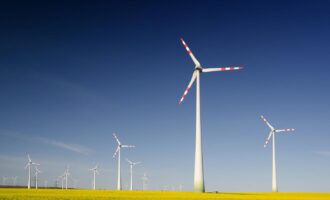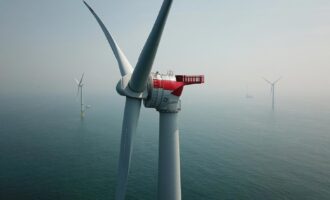
Asia to overtake Europe in demand for biofuel
Biofuels were hit hard by the Covid-19 pandemic. They were the most affected of all renewable sources, with the dramatic collapse in oil prices corresponding with a drop in production and usage of biofuels. Declines in biofuel demand were the first drop we have witnessed in two decades. At the time, some experts suggested the plant-based substitute for petrol and diesel may struggle to recover.
Renewables are considered the backbone of the energy transition to net-zero emissions. The International Energy Agency (IEA), a Paris-based intergovernmental organisation, released its Renewables 2021 report in December 2021. The paper forecasts the deployment of renewable technologies based on current policies and market developments and includes analysis and forecasts to 2026.
The Renewables 2021 paper highlights that biofuel prices have increased 70-150% compared to 2019 average prices, driven by the United States, Europe, Brazil and Indonesian markets. Crude oil prices increased 40% over the corresponding period.
Rising costs have affected growth, however, the IEA still anticipates 28% growth of biofuels over the 2021-2026 forecast period with demand reaching 186 billion liters. One-fifth of projected growth is attributed to a recovery from the Covid-19-initiated slump. Government policies and overall transport fuel demand will be influential in the growth of biofuels, says IEA.

Despite this positive outlook, the IEA report concedes there is a high level of uncertainty around biofuel projections due to a range of factors, including the relaxing of blending mandates due to higher feedstock and biofuel costs. Brazil, Argentina, Colombia and Indonesia are specific regions where blending mandates have been temporarily delayed or reduced. These policy changes are expected to reduce demand by 3% or 5 billion liters during the forecast period.
Strong domestic policies and export-driven production are fostering Asian biofuel production and Asia is expected to surpass European biofuel production by 2026. Asia will account for 27% of new demand and 29% of additional supply during the forecast period, according to the Renewables 2021 estimates. India and Indonesia are spearheading growth in biofuel demand in the region.
While the growth of biofuels is promising for global climate efforts, the bounce-back of biofuels will be uneven. The IEA report indicates that ethanol demand will remain below 2019 levels until 2023 off the back of high ethanol prices in Brazil and lower gasoline demand in the United States. Conversely, biodiesel, renewable diesel and biojet fuel will exceed 2019 levels in 2021. Policies in the United States and Europe contribute to a tripling of renewable diesel demand between 2020 and 2026. Renewable diesel is a popular fossil fuel alternative as it is produced with a low greenhouse gas intensity using wastes and residues.
However, absolute ethanol growth surpasses renewable diesel, with India and Indonesia the key initiators of growth. India has pulled forward its 20% blending target by five years to 2025 and is on track to become the world’s third-largest ethanol consumer by 2026.
As biofuels rebound from a temporary stumble, Covid-19 seems to have done little to dampen demand for renewable electricity—despite rising prices. IEA expects renewable electricity capacity to exceed 4,800 gigawatts (GW) by 2026, an increase of over 60%, which it says is more than the current combined capacity of fossil fuels and nuclear.
China will lead the increase in renewable electricity capacity, comprising 43% of growth. The world’s most populous nation has a target of 1,200 GW of total wind and solar PV capacity by 2030, part of a wider effort to become carbon neutral by 2060. IEA believes China will achieve its 2030 capacity goals four years early. In many provinces within China, onshore wind and solar PV are cost-competitive with coal generation, and improved grid integration is also a key driver of renewable power adoption.

Europe is also expected to overshoot existing targets for renewables by2030, as outlined in National Energy and Climate Plans (NECPs), and IEA predicts renewable capacity in the United States will be 65% greater than in the preceding five-year period. In India, the fastest-growing market for renewable power in the world, installations from 2020-2026 will double as compared to 2015-2020, according to IEA. Almost 95% of global power capacity growth will come from renewables.
Solar PV is expected to grow by 17% in 2021. The IEA report attributes 60% of renewable capacity additions to solar PV alone over the next five years off the back of commitments from the recently completed COP26 in Glasgow, Scotland, and improved policies. Average annual additions of 305 GW are expected to 2026, a 58% increase on the previous five-year period. Renewable electricity forecasts have been revised upwards from the previous IEA renewables report.
Rising commodity and shipping prices are impacting the manufacture of solar PV and wind turbines. The IEA paper cited an increase in PVgrade polysilicon price increases of over 400%, a 50% increase in steel, and an 80% increase in aluminium—alongside astronomical shipping prices. Despite these increases, renewables have been resilient. Natural gas and coal price rises have insulated renewable technologies and improved the competitiveness of wind and solar PV. With appropriate policies, IEA believes renewables could attract significant private investment in electricity, heat biofuels and biogas.
Wind power continues to grapple with difficulties of social acceptance, permits and grid connection. Nevertheless, a rush to complete projects in China before the expiry of subsidies saw onshore wind installations skyrocket in 2020 to almost 108 GW. IEA does not anticipate the same level of growth over the next five years, though, it expects average growth of 75 GW a year, a 25% increase from 2015-2020.
Growth will continue to be driven by China, who together with Europe and the United States account for 80% of wind expansion. Offshore wind capacity continues to move forward in leaps and bounds and is expected to secure one-fifth of the global wind market by 2026 as capacity triples in the forecast period.
Fossil fuels continue to fulfil the majority of global heat consumption, with only a slight rise expected in the renewable heat market, from 11% in 2020 to 13% in 2026.
Despite IEA’s growth forecasts, the IEA report highlights a significant gap between renewables growth and a net-zero pathway. Considerable acceleration in growth is necessary to meet the requirements of IEA’s Net Zero Emissions by 2050 Scenario; biofuels need to quadruple and solar PV and wind annual additions need to almost double over the upcoming period. The Renewables 2021 report calls for greater ambition on renewable energy and associated policies.







